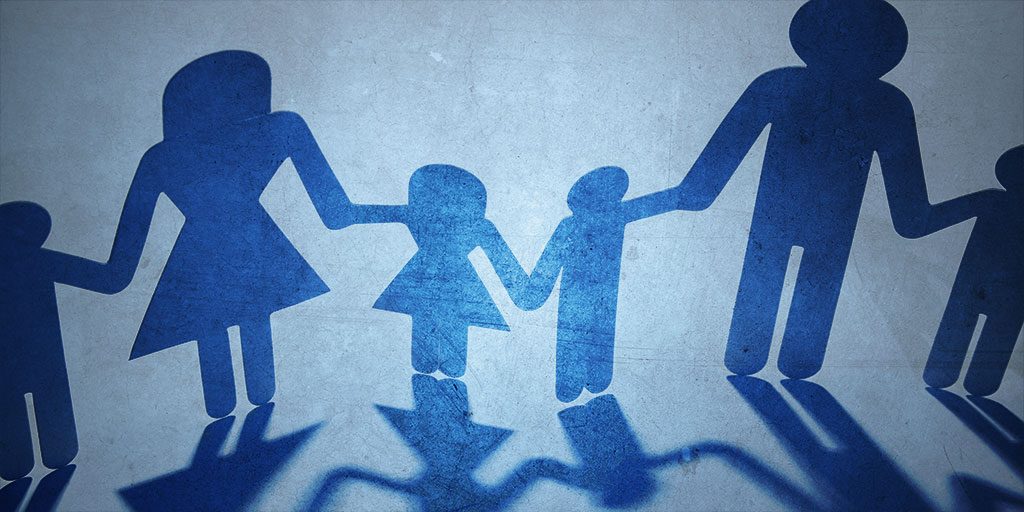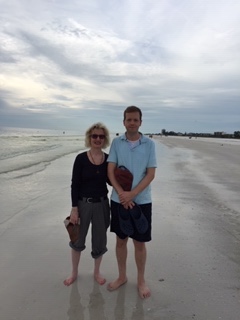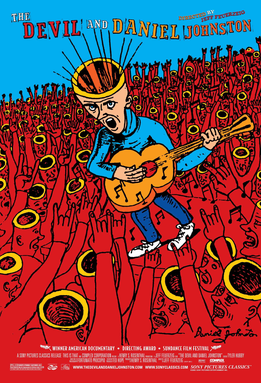I’ve been corresponding with “Joyce” on and off for five years. In my opinion, she’s one of the world’s most devoted mothers, in her case because of the impressive amount of medically complex information she has been forced to teach herself in order to unravel the mystery of what was causing her son’s physical and psychiatric symptoms.
This is her story, told in her own words, about her son Thomas.
Sky-high
My son Thomas was a high-achieving, responsible, active young man who possessed grit, focus, and determination. Since the age of eight, neighbors requested his help pet sitting or maintaining their lawns which allowed him to learn the importance of work and how to manage money. He started flying power planes at the age of ten, earned his BSA Eagle Scout rank at the unbelievable age of twelve, completed his glider training hours and tests in order to gain his glider pilot license at age sixteen. He has served as Governor’s Page and Senate Page, volunteered for local political campaigns, attended conferences in Washington, DC where he met prominent people, and traveled overseas for a missions’ trip. He apprenticed with a graphic designer, and received classical training as an artist. His career goal was to go into the Marines as an officer to fly.
Today, at age 36, Thomas lives at home with his family, unable to complete his college studies, unable to participate in meaningful work or volunteer, and he is unable to engage in mutual relationships or have a social life. As you will discover by reading this post, he has recently started on a treatment plan that appropriately targets his symptoms.
Diminishing Dreams
Beginning when he was in his early twenties and by degrees throughout the years Thomas’s symptoms slowly presented themselves. There were small comments about headaches that he thought came from not wearing his glasses to observable symptoms of him dragging and struggling when he practiced his runs for Civil Air Patrol advancements, after summer basketball training camps, and after his gliding training. He required an increased amount of sleep to function. As time passed, Thomas would communicate that when questioned, he had the answer, but he could not get it out quickly enough.
I realize now that it was during the winter of 2010 that two things happened that were indicative of where his life was soon headed. He was in his second year, second semester of the Great Books class for western civilization college credits and he had trouble signing in one day. After he finally signed in he crashed with fatigue and fell asleep in the classroom. At another time during that same winter, in the early hours of the morning while talking with me, Thomas displayed what I observed as disorganization as he tried to communicate. The topics were true, they were just not connecting. I was so concerned as this was out of the ordinary and very unusual that I thought it best to get him to a doctor, who told me to take Thomas straight to the emergency room. That’s where the worst nightmare of our family’s life started. A superficial physical and the most general blood test showed nothing significant, Thomas was whirled off to the psychiatric hospital for what was supposed to be a further evaluation; however, it turned into forced injections and forced medication; if he didn’t comply, the hospital would not discharge him.
What ensued were mandatory physician and psychologist visits. Both clinicians disagreed with the schizophrenia diagnosis and encouraged Thomas to stop the medication. He did. However, he was not aware of nor was he informed about withdrawal symptoms and the need to get off the medication gradually. Thomas made it through that initial struggle and remained home and unmedicated for two more years, unable to carry on with his life except for occasional social activity. Gradually he abandoned everything: Classes, goals, and friends. There would be no phone calls, no cards, no visits. One day, a new nightmare began. Thomas had posted on social media and what ensued was a note retrieved from the mailbox with directions for him to follow. He was intentionally set up, entrapped, and then falsely accused of a crime. By court order, Thomas had to participate for one year in mandatory treatment before the charge would terminate. I later managed to have the charge expunged from the public record.
Psychiatric Diagnoses
Psychiatric diagnoses are not based on objective, scientific evidence. They are labels placed upon a person from subjective observation alone. There are no laboratory tests, period. The diagnoses are social constructs designed to benefit the various entities that service this population. What this means is that the diagnoses given to Thomas over the years: Bipolar, Psychosis NOS (Not Otherwise Specified), Schizophrenia, and Schizophrenia-disorganized; and the mandatory “treatment,” would provide no clue to the underlying reason for his deterioration, which remained unanswered and unexplored.
Despite all of these diagnoses, Thomas was left with a fatigue that worsened, his communication difficulties left him struggling to interact with others because he was no longer being understood, his mental clarity receded into confusion, and he began having recurring hospitalizations with neuroleptics being the only solution forced upon such a highly fragile person. I continued to tell the doctors that the medications were exacerbating his symptoms, but to no avail.
The Journey Begins in Earnest
Having seen zero progress from the standard and conventional medicine,I began to explore alternatives, making it clear to each new doctor that neuroleptics were not an option in Thomas’s case. They were more than willing to comply with my request. I consulted: Chiropractors; a doctor of osteopath; an integrative doctor who focused primarily on intravenous (IV) therapy and glutathione pushes, along with loads of supplements and homeopathic remedies; several naturopathic doctors; a hematologist; specialist MDs, many of them using a set nutrient program given to all of their patients. When I occasionally voiced my concerns or had questions about their treatments, these practitioners either screamed at me, ignored me, judged me as an unsuitable healthcare power of attorney (because I was against the medication), and I was told on two occasions that Thomas could no longer be seen by them. When they could see that the proposed solutions did not prove helpful in Thomas’s case, the practitioners reverted to the standard, conventional solution—prescription medicine. The underlying reason for Thomas’ initial and continuing symptoms had still not been determined.
Leave it to me
It eventually dawned on me that no other person was going to give the time and effort required to find the reason for my son’s health issues unless it was me. Consequently, I committed myself to meticulously reading and researching everything I could. The internet was an invaluable source and ally: blogs, research studies, diagrams and pathways, recovery testimonials, social media groups—any material that would give plausible clues for why a vibrant young man with a promising future had it slowly slip away from him.
Learning how to gather, organize, and interpret reliable information bit-by-bit from conventional test results—such as, the Complete Blood Count with Differential; functional tests like the Organic Acids Test (OAT), and the NutrEval; and from the 23andMe genetics test results interpreted by a Strategene report (which is not only a beautiful work of art, but it offered a boatload of information about my son’s genetic predispositions)—all this I used to carve out a more scientifically tailored path for Thomas.
Additionally, steps were taken to increase an awareness of the damage created by and from prescribed medications through resources like: Your Drug May Be Your Problem by Peter Breggin and David Cohen; and Drug Muggers by Suzy Cohen, and the 2013 blog post from the Director of the National Institute of Mental Health (NIMH) entitled “Antipsychotics: Taking the Long View,” which included statements like the following:
“…Antipsychotic medication, which seemed so important in the early phase of psychosis, appeared to worsen prospects for recovery over the long-term… remaining on medication long-term might impede a full return to wellness.”
Reading the NIMH Director’s blog post shocked and angered me. I thought, after all these doctors have jammed this “treatment” down the throats and jabbed it into the arms of our loved ones, wrecked the balance of their neurotransmitters with no scientific proof for any of their hypotheses, NOW you tell us that the prospects for full recovery are slim to none? The anger and betrayal I felt intensified my determination to find a better way.
Clues to Likely Causes
My big “Aha!” moment came in March, 2022 after The Guardian| UK News, informed its readers that Bruce Willis was retiring from his acting career due to a diagnosis of aphasia, with Trudy Scott, a certified nutritionist, commenting:
“I wonder if anyone has spoken to Bruce about vitamin B12 deficiency which also causes aphasia?”
My suspicion, recorded long ago in hospital records, that Thomas’s struggle to retrieve nouns and verbs when speaking was similar to aphasia anomia (and which was later one of Thomas’s official diagnoses), made me hurriedly retrieve the detailed notes that I had collected over the years. What became apparent was that Thomas’s aphasia symptoms were associated with both a B12 deficiency and inadequate intake of choline stemming from the vegan diet that he has followed since childhood as a way of eliminating his chronic ear infections due to a milk allergy.
The vegan diet is devoid of animal derived foods that would normally supply adequate levels of B12 (red meat, poultry, eggs, dairy, seafood). At the time that Thomas started on the vegan diet, I was not aware of the need for added B12. Plant based foods simply do not include enough B12. As the vegan diet gained in popularity beginning in the 2010s, this information became more widely known.
The B12 deficiency that comes about through adherence to the vegan diet is not detectable through laboratory testing, moreover, a person can be asymptomatic. One of the markers used to determine a vitamin B12 deficiency is elevated levels of homocysteine, a toxin. Vitamin B12 is vital for methylation, a process of adding a methyl group (CH3) to molecules like toxins that you want to eliminate, and to molecules needed in the body.
Reviewing previous laboratory tests, I discovered that Thomas did, in fact, have an elevated homocysteine level. Unfortunately, the practitioner at the time did not mention the elevated homocysteine and what that meant, nor did he discuss a B12 deficiency. Thus, my son’s symptoms persisted.
Another problem with the vegan diet is is an inadequate intake of choline, (a precursor to the neurotransmitter acetylcholine). Acetylcholine is crucial for learning, memory, sleep, and overall brain health. Low levels of acetylcholine lead to an over-active sympathetic nervous activity, which means adrenaline/noradrenalin excess –this helps to explain the neurosis, mania and other bizarre behaviors that occur when acetylcholine levels become deficient.
Absolutely the Wrong Treatment in Thomas’s Case
Furthermore, to complicate the matter, anticholinergic drugs which include neuroleptics, are substances that block the action of the neurotransmitter acetylcholine at synapses in the central, peripheral, and parasympathetic nervous systems. More specifically, anticholinergic substances block the cholinergic muscarinic receptors canceling the regulating function of the parasympathetic nervous system. The result is an unopposed sympathetic nervous system that can function normally, but the non-functioning parasympathetic nervous system that would normally regulate it is unable to perform. This leads to an over-active sympathetic nervous activity.
Manifestations of an over-active sympathetic nervous system can be associated with: Risky or reckless behavior (because the person tends to think ‘less’ or to not think their actions all the way through); cognitive impairment; general disorganized thinking; slow or confused thinking; memory impairment; impaired concentration; information processing difficulties; fatigue that worsens with physical and/or mental exertion; impulsivity; social isolation; easily angered; low threshold for criticism, to name a few.
Hiding in Plain Sight
I’ve never hidden from the treating practitioners the fact that Thomas had been following a vegan diet. It was always front and center, right in plain sight for them to consider. I’ve constantly pointed out to them that the neuroleptics given to Thomas only worsened his condition and we needed to look outside the box here. “He cannot hold his marbles together, even when he’s on these drugs,” I often remarked. Why didn’t the practitioners begin with the vegan diet as a red flag alert?
Missed Diagnoses Lead to Misdiagnoses
Because the vitamin B12 and choline were not part of his diet, Thomas’ genetic weaknesses, dependent on those nutrients, further impaired his functioning. But more importantly and consequentially, by overlooking the pitfalls of a vegan diet it’s clear that a medical diagnosis was missed; an avenue that if it had been explored, acknowledged, and addressed initially, would have provided a simple solution. All the neuroleptics, and all the damage and disruption they caused to Thomas’s well-being, would not have been used or even needed. Moreover, a diagnosis of schizophrenia is, in theory (but not in practice), supposed to be arrived at after determining that the symptoms are not due to other factors such as substance abuse, medication (the neuroleptics themselves), or a medical condition (in Thomas’s case a B12 deficiency and aphasia anomia)
Would this be a legitimate reason to consider the diagnoses—misdiagnosed?
The Road to Recovery
My years of medical sleuthing has resulted in more favorable outlook for Thomas and hope for his recovery is cautiously growing. He has slowly tapered off the neuroleptic, with the practitioner’s approval, and has reached stability. He’s undertaken the necessary dietary changes, added the correct amounts of vitamin B12 and supporting nutrients for restoring acetylcholine and is becoming aware of, and addressing, his genetic weaknesses. I hope that he is finally on a path that will enable him to slowly re-enter life’s journey in a way that can be productive and fulfilling for him.





